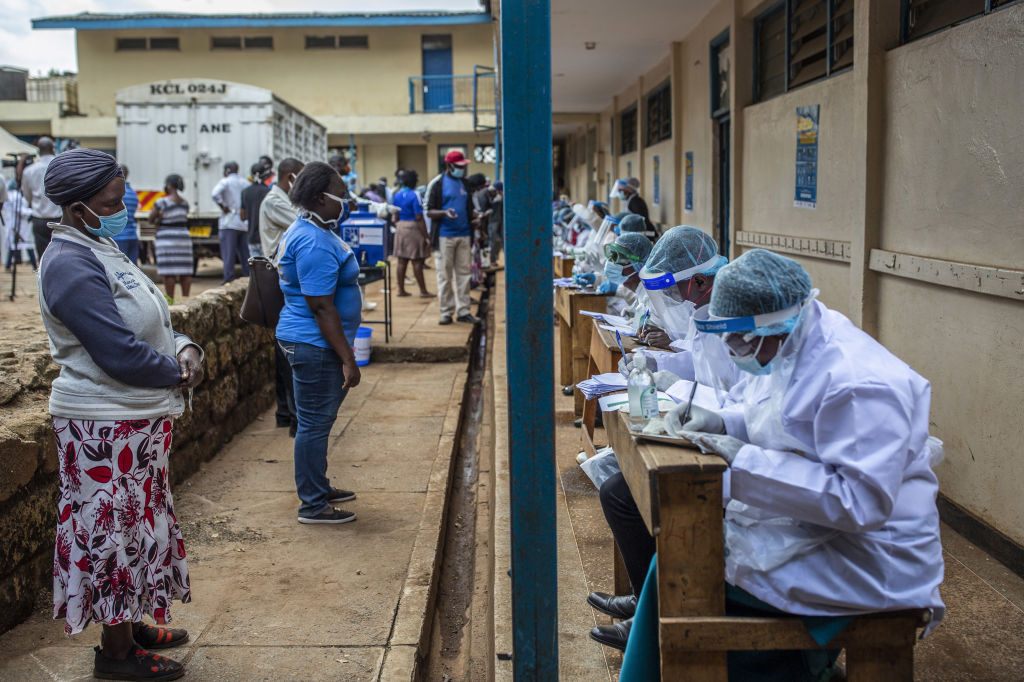
Kenya’s COVID-19 second wave severe in rural counties

Kenya’s rural counties are bearing the brunt of a second wave of COVID-19 that has hit the east African nation, with the disease sweeping across the regions that initially seemed safer from the virus.
Since the outbreak of the disease in Kenya in March, COVID-19 was mainly concentrated in the capital Nairobi and Mombasa, the tourism bedrock at the Coast.
Restriction of movement in and out of the two cities helped cushion rural areas making many residents ignore health measures that include social distancing and wearing of face masks.
The laxity made rural areas vulnerable after the reopening of the country in August, with the disease currently spreading faster in the areas.
Kakamega, Kisumu, Uasin Gishu, Nakuru, Bungoma and Turkana are some of the counties that are recording a surge in COVID-19 cases.
The areas are not only contributing to a faster rise in the national infections but also fatalities.
In Kakamega, several deaths have been recorded, some of the prominent people, as a number of medics also get infected.
In Nakuru, the main referral hospital is overwhelmed with patients, according to the local government as several offices are closed to stem infections.
“The rise in infections has seen the disease capture people’s attention for once since its outbreak in Kenya,” Collins Ojinjo, a resident of Kakamega, said on phone on Friday.
The regional government has identified several areas as hot spots, enabling many residents to exercise caution.
“But still it is business as usual for many others who are not wearing masks or social distancing. This is the main undoing as many still believe COVID-19 is a Nairobi disease,” noted Ojinjo, an accountant at a motor vehicle company.
County offices, schools, hospitals, churches and prisons are among facilities that have been closed to the public or shut down to curb spread of the diseases across Kenya, including in Bungoma, Kakamega and Uasin Gishu.
On Thursday, Uasin Gishu recorded 103 cases, the second highest after Nairobi Kenya that had 395 cases out of the total 761 announced.
A recent study by the Kenya Medical Research Institute (Kemri)-Wellcome Trust isolates counties in Western, Eastern, Rift Valley and North Eastern Kenya as among the worst hit by COVID-19.
Mutahi Kagwe, the cabinet secretary for health, noted on Thursday that the country is experiencing a second wave of COVID-19 infections.
“We have a second wave of the disease in the country and for us the tough balance is now between keeping our economy running and keeping people safe. This is creating challenges,” he said, noting the government may institute new restrictions to curb rising infections.
Fatalities, similarly, are on an upward trajectory, with the east African nation losing 68 people in one week, according to Kagwe.
President Uhuru Kenyatta has convened an extraordinary session of the national and county governments on Nov. 4 to discuss measures to stem the rising cases.
Meanwhile, the health ministry said some 1,185 people tested positive for COVID-19, with Nairobi contributing the bulk, pushing Kenya’s total caseload to 53,797 from the 687,000 samples tested so far.
The ministry of health said some 1,145 of the new cases are Kenyans while 40 are foreigners, noting that some 272 patients recovered; 203 from the Home-Based Care Program and 69 from various hospitals across the country.
So far, 35876 people have recovered from the virus which was first detected in Kenya in mid-March.
The health ministry also announced 17 new COVID-19 deaths, pushing the total of fatalities to 981.
According to the health ministry, there are 1,119 patients admitted to hospitals across the country with some 4,440 receiving care under the home-based isolation and care.
The ministry said in a statement that 41 others are in the intensive care unit (ICU) out of whom, 26 are on ventilatory support and 15 on supplementary oxygen.
It said there are 45 patients on supplementary oxygen while 15 are receiving care in the high dependency unit.






